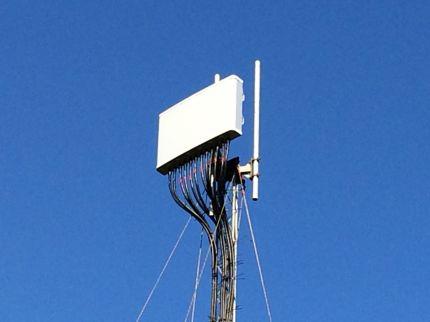In an age of smart phones, wireless data usage has truly exploded. For mobile operators, delivering the high-bandwidth services demanded by users requires the roll-out of innovative infrastructure. When it comes to high-density crowds converging for special events, such hotspots place even greater demands on operators to support capacity demands. To the rescue, the multi-beam antenna.
Delivering the everyday capacity and coverage needs for millions of subscribers is hard enough for mobile network operators (MNOs). However, meeting the capacity and coverage requirements of the millions of people attending sporting, music, religious and other events each year, whether at temporary or permanent venues, poses challenges on a completely different order of magnitude. The simultaneous bandwidth expectations of tens or hundreds of thousands of smart-phone-wielding, social-media-using, video-sharing subscribers means that operators must rely on the very latest innovative infrastructure solutions to support such usage.
Whether in 2G, 3G or 4G/UMTS/LTE environments, MNOs need to ensure best quality of service in these high-density user environments and to do this they need to install the most capable, innovative infrastructure technologies – particularly the right antennas – to support bandwidth and traffic demands. Traditional single and twin-beam planar base station antennas simply will not deliver the capacity and coverage required in these big-crowd scenarios, which is where the development and deployment of the latest multi-beam antennas comes in.
Multi-beam innovation
Based on patented phased-array technologies, multi-beam antennas have been playing a increasing role in recent years delivering huge increases in network capacity for permanent, as well as temporary, cellular hotspot deployments for major events around the world. Where hundreds of thousands of people come together, either regularly or for only short periods, using smart phones to stream and share video, as well as for making good old voice calls, multi-beam antennas can make all the difference.
Earlier this year, for example, in support of mobile operator, Oi Móvel, in Brazil, fully ultra-wide-band multi-beam antennas for special coverage and capacity occasions – the Six-Beam Special Events Antenna from CCI – were used to deliver services for visitors to the Rio Olympics. The six-beam solution deployed suited the traditional BTS x3 factor of radios enabling it to provide 1800/2,100/2,600 MHz LTE-ready coverage. Increased sectorization can be achieved in a single antenna in very efficient ways and has always been a technique for increasing capacity. The six-beam solution – each beam effectively its own sector – has minimal overlap between each of the six narrow beams helping to keep interference to a minimum. When combined with very low side lobes, it also offers the best performance for the MNOs delivering 3G, 4G/LTE and UMTS services to high-density hotspots.

Temporary hotspot installation in the UK for a leading MNO of a CCI Special Events Antenna

Six-sector multi-beam diagram showing high beam separation, which results in less interference
Technological and European challenges
In practical terms, the challenge for manufacturers is putting six antennas into a single structure. This results in an end product physically wider than a traditional macro antenna. However, it does result in much improved beam control and can also offer full 1,695-2,700 MHz support; the first multi-beam antennas serve all high-band technologies. This is significant as it enables the support of multi-carrier aggregation, particularly with LTE, so that more than double the throughput of LTE systems can be supported, improving user performance and quality of service.
In Europe, one major challenge has been the support of carrier aggregation across all the regularly used LTE bands; in a major breakthrough, this can now be met by multi-band, multi-beam antennas as well as focused-beam, in-building wide-band antennas. Solutions which can support 800/1,800/2,600 MHz LTE bands are the ideal combination for permanent and temporary stadium-type, hotspot deployments across Europe.
Today and tomorrow
All over the world, MNOs are becoming aware of the network improvements and capacity increases multi-beam antennas can deliver. At the Rio Olympics and in St Peter’s Square for the recent, year-long ‘Extraordinary Jubilee of Mercy’, six-beam antennas have been extremely successful during 2016, proving that multi-beam antennas have a permanent place in macro network planning, now and in the future. Initially intended as solutions to fill temporary hotspots, they are now increasingly being adopted for permanent installations, such as their deployment in St Peter’s Square in Rome by Italian MNO, TIM – an installation the supports the data demands of more than fifty thousand people daily. And in the UK, six-beam, special events antennas for gatherings such as the Glastonbury Music Festival, have been deployed by one of the country’s MNOs, with all capacity demands placed on them from the thousands streaming and sharing video and music being met.

St Peter’s Square in Rome – spot the antenna! The CCI Six-Beam Special Events Antenna deployed by TIM in a discreet location provides daily, permanent capacity for the thousands of daily visitors to the square
In the future, the demand for mobile bandwidth will only grow. The good news is that multi-beam developments are moving fast and keeping ahead of that growth in demand, with manufacturers currently looking into nine-beam and 15-beam systems that will offer MNOs major new multi-band systems for their future network planning needs. With multi-carrier aggregation, achieving almost 400-500Mb/s from each beam is theoretically possible. This means that with six beams, more than a Gb of data capacity can be achieved within a single cell. With such possibilities, MNOs must surely see the latest multi-beam antennas as integral, not only to meet their high-profile hotspot needs, but also for their macro network roll-outs.



